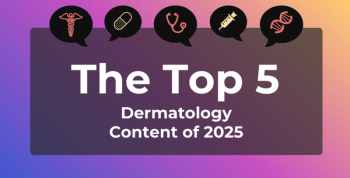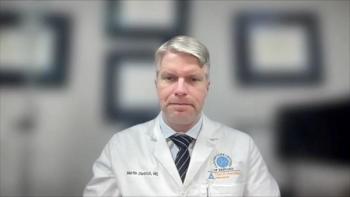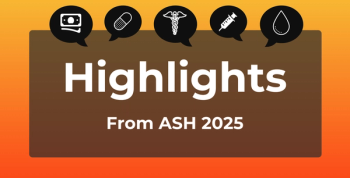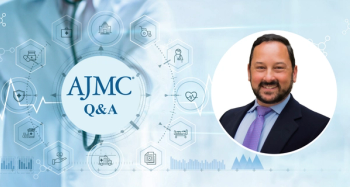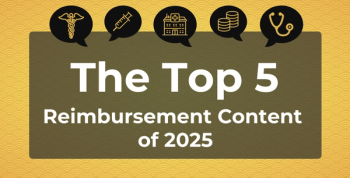
It Take a Village in Cancer Care: A Q&A With David Nguyen, MD
David Nguyen, MD, medical oncologist with Tufts Medicine and Lowell General Hospital, discusses the evolving landscape of advanced cancer treatments like chimeric antigen receptor T-cell therapy and bispecific antibodies
There are significant challenges in bringing complex
Nguyen was a speaker at the recent Institute for Value-Based Medicine®
Payers and health care systems, he explains, need to be agile for widespread, cost-effective adoption of CAR T and bispecifics because these therapies are here to stay, and successful care templates may be translatable to other complex conditions.
This transcript has been lightly edited for clarity.
AJMC: What are some of the most pressing logistical barriers in delivering CAR T and bispecific therapies, and how must care models be adapted to address these barriers to not compromise patient safety?
Nguyen: CAR Ts and bispecifics are a challenge in terms of delivering to community. Most of the time it's lack of infrastructure, lack of experience. A lot of our academic centers have done the clinical trials, so they have more experience with it. Patients also have to travel such long distances to try to get these treatment options, and that is inconvenient for them as well.
For us in the community, we do want to give these, but we lack support. We don't have, for example, intensive care unit doctors or neurologists who may be up to date on cytokine release syndrome [CRS] symptoms of bispecifics. Certainly at our institution in the community, we cannot give CAR T; we rely on our academic institution about an hour and a half away. But for bispecifics, we can definitely give them. Normally our motto is the academic centers start the patients on bispecifics, and if they do well, then we'll give it in the community.
Yes, there are a lot of issues of trying to get these therapies in the communities: lack [of] infrastructure, costs, experience. Nursing has to be comfortable [managing them]. Pharmacists as well. It's basically a village that you have to create to try to get bispecifics into the community.
AJMC: As demand for CAR T and bispecifics grows, what strategies have proven most effective—or challenging—in scaling delivery models while maintaining high standards of care across different practice settings?
Nguyen: There are models that are being used now where they actually give the first bispecific in the community. I think the model has to be to a point where the patient is close by. There also has to be a lot of trust, a lot of commitments, a lot of resources for nurses to try to figure out CRS symptoms quickly, treat them quickly. Certainly having tocilizumab on board, an interleukin-6 receptor antibody, as well. A lot of hospitals may not have that on formulary for various reasons as well.
We also need education. Doctors, neurologists, cardiologists, anyone who will likely be involved in trying to handle the adverse effects of bispecifics [and] CAR T cells need to be educated as well. It's sort of like a certification, if you will, to try to get these into the community.
AJMC: Given the distinct logistical and infrastructure demands of CAR T vs bispecifics, what operational strategies or priorities should clinicians focus on to best streamline care delivery?
Nguyen: Certainly, financial. Normally, where the patient gets their first infusion, they'll have insurance approvals, and if that can be transferred to the local hospital so that we don't really have to worry about getting authorization, I think that might be a good one. Another one might be a person that can have handoff; for example, a nurse at the academic center would give handoff to our nurses locally as well, so they can be in touch. Certainly on the MD side, we always get handoff there, but it may also require handoff to our support staff as well. Pharmacists as well. That can get us up-to-date on how the patient did, recommendations for any subsequent adverse effects, things like that.
AJMC: How are digital tools being leveraged to ensure seamless communication and continuity of care?
Nguyen: I think one could be, for example, you have a watch, an Apple Watch, or something that monitors blood pressure, pulse, or even temperature—some sort of a reminder patients can check, and if it goes above a certain threshold, that might trigger potential impending CRS. Perhaps with AI as well on the back end to look at all the vitals, how they did in the hospital compared with how they're doing outpatient, I think using these digital tools could allow the patient to transition easier into the community setting.
Perhaps also allow the community centers to start off bispecifics as well. I think the key reason why we always have patients admitted is because you have supervised close monitoring—but these digital tools could also be a bridge to do that. If a patient doesn’t have comorbidities that would suggest CRS, if [we feel they're] able to really do the first infusion as an outpatient, these digital tools could be the bridge. However, if a patient has serious comorbidity—chronic obstructive pulmonary disease, emphysema, heart failure, things like that—you will probably admit them anyways, just to closely monitor. Overall, I think digital tools allow us to bridge some patients, mostly into the community setting, instead of having them admitted with their first infusion.
AJMC: When AI is involved, is human review on the back end a nonnegotiable? How would that work?
Nguyen: There always has to be a human in the loop. The AI will look at the thousands of data points of how the patients did in the hospital, their vital signs, and things like that. They'll be able to monitor the patient closely as an outpatient. And if there are certain triggers, then the AI will flag that this person is potentially going to be predicted to have a CRS event in the next 12 hours, or another event. That would trigger maybe the on-call oncologist, for example, to call the patient to see how they're doing and the like. There always has to be a human in the loop with these AI algorithms.
AJMC: How can novel payment arrangements support scalable access while balancing upfront costs and long-term value for sustainable care models?
Nguyen: Bispecifics and CAR T cells are here to stay. It's really from a payer standpoint, their ability to adapt to outpatient care. If the patient gets admitted, that's huge cost on their side, so if we can do some infusions on an outpatient basis, that's going to help them with the cost as well. I think payers have to really be agile; they have to adapt. It's not something that we can ignore, and neither should the payers ignore it. I think if we're able to get up a model that's successful for myeloma or any other malignant hematology, lymphoma, things like that, that's an easily translatable model to these solid tumors as well.
Newsletter
Stay ahead of policy, cost, and value—subscribe to AJMC for expert insights at the intersection of clinical care and health economics.

